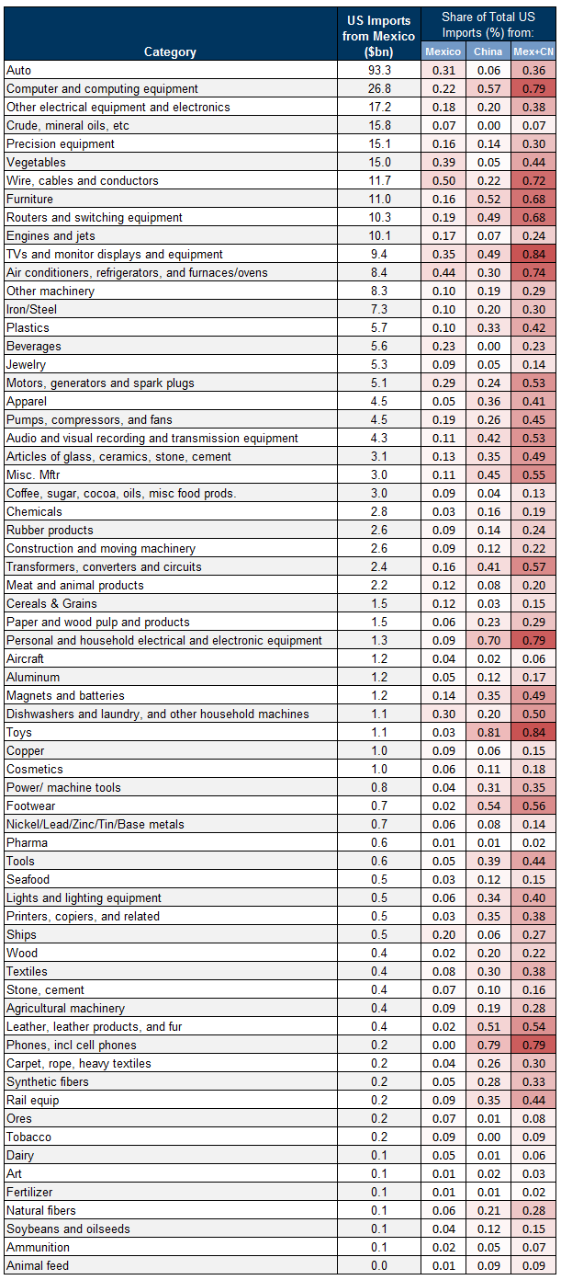Vice President Mike Pence may have assured Canadian Prime Minister Justin Trudeau that the Trump administration was “absolutely committed” to passing USMCA this summer, but that was before Robert Lighthizer infuriated Democrats by starting the clock on bringing legislation to ratify the treaty before Congress – and also before President Trump revealed his plans to impose tariffs on Mexican imports.
Millennials better stock up on their avocados before June 10.
The chances of USMCA passing were already looking tenuous, as Democrats have appeared reluctant to work with President Trump to facilitate what would be his biggest trade triumph to date. But now that Trump has angered Mexico and Democrats with the new tariffs, chances of USMCA passing have fallen from ‘low’ to ‘nearly zero’, according to a team of analysts at Goldman Sachs.
In a note to clients published on Friday, Goldman explained that it believes Trump will move ahead with 5% tariffs on Mexican imports on June 10 – at least that’s the bank’s base case, even as its analysts concede that Trump never followed through on threats to close the southern border.
And, assuming the tariffs do take effect, Democrats in the House will likely slow consideration of USMCA – likely missing the 90-day window for consideration triggered by Lighthizer on Thursday – and greatly increasing the chances that the deal won’t be ratified until after the 2020 election (thought Goldman still believes ratification is likely in the long run, given the support from the business community).
Read Goldman’s full note below:
* * *
BOTTOM LINE: President Trump has announced the intent to levy a 5% tariff on all imports from Mexico effective June 10, rising by 5pp July 1 and every month thereafter until it reaches 25%. The President states he will remove the tariffs when Mexico “substantially stops the illegal inflow of aliens coming through its territory.” The White House yesterday (May 30) also submitted draft USMCA text to Congress; Canada and Mexico also just took steps to begin legislative consideration of their implementing legislation. We view this as an attempt to show action on the immigration issue while also pressuring congressional Democrats to pass USMCA. While still possible, enactment of USMCA prior to the 2020 election would no longer be our base case if these tariffs are implemented as proposed.
MAIN POINTS:
1. President Trump has announced the intent to levy a 5% tariff on all goods entering the US from Mexico effective June 10. The tariff would increase by 5pp on July 1 and every month thereafter until the President determines that Mexico “substantially stops the illegal inflow of aliens coming through its territory.” Given the specific and near-term implementation date the President cites, we believe at least the first tariff at 5% is likely to be implemented as stated. That said, we note that another of the President’s proposed immigration actions – closing the US-Mexico border – was also threatened but never implemented. The odds of this tariff are at least somewhat higher, we believe; while the tariff would be highly disruptive, it would be less so than full closing of the border would have been, and also has been proposed in a more specific way.
2. This action is also linked to congressional consideration of USMCA, in our view. While there had long been a possibility that the President would announce the intent to withdraw from NAFTA as a means of pressuring Congress to pass USMCA—and it is still possible he could do this—the proposed tariffs might also be intended to put pressure on Congress to pass USMCA. The White House sent draft text to Congress yesterday (May 30) to trigger the first procedural step for consideration. However, it is extremely unlikely that Congress would take any action on USMCA prior to June 10. Congress must wait 30 days to introduce the formal legislation, and would likely need at least a few more weeks to pass it (the Trade Promotion Authority (TPA) process limits consideration to 90 legislative days).
3. If the tariffs take effect, we believe this would make USMCA ratification less likely to occur prior to the 2020 election. We have believed that House Democratic leaders would be inclined to eventually allow USMCA passage – primarily with Republican votes but a substantial number of Democrats – because of substantial support from the business community and because the TPA process requires the House to vote on the measure, so simply declining to address the matter is not an option. However, if these tariffs take effect, we expect Democratic leaders to slow USMCA consideration, which would lower the odds of enactment this year and, we believe, prior to the 2020 election since enactment in an election year is likely to be difficult. Moreover, we expect that Mexico will slow its ratification process if tariffs are in place.
4. The US imported $352bn in goods from Mexico in 2018, and exported $265bn. At a 5% tariff rate, this would generate roughly $18bn in tariff revenue annually, well under the $62bn that the 25% tariffs already in place on $250bn in imports from China will raise at an annual rate. The largest categories of imports from Mexico are autos and auto parts ($93bn), computers ($27bn), routers ($10bn), and other electronics ($17bn), and other categories shown below in Exhibit 1. Some products from Mexico account for a substantial share of imports in that category, such as air conditioners (44%) and TVs (35%). If tariffs on imports from Mexico as well as tariffs on List 4 imports from China are imposed, then a significant majority of US imports of some products would be subject to additional tariffs, such as computers and equipment (79%), TVs (84%), personal electronics (79%), and others.
* * *
And for reference, here’s a breakdown of what the US imports from Mexico (it’s unclear which line encompasses the avocado trade, but in 2017, the US imported $2.6 billion of avocados from Mexico).
via ZeroHedge News http://bit.ly/2Z0nlok Tyler Durden
